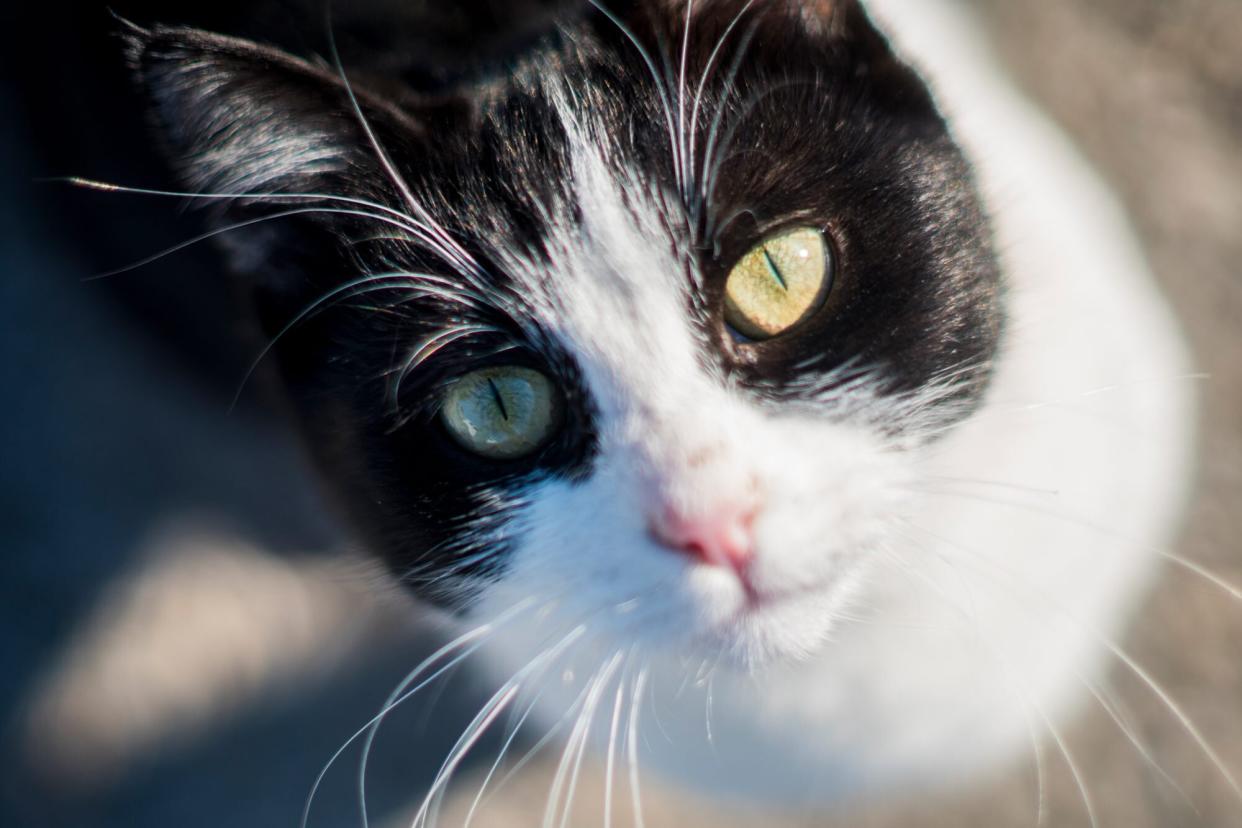Do Cats Get Periods? Kind of—Here's What a Vet Says

Director / Getty
TABLE OF CONTENTS
On This Page
Do Female Cats Get Periods?
What Are Cats in Heat Like?
When Do Cats Get Their Period?
Do Cats Know When You're on Your Period?
Cats are so fascinating. From their distinctive tail talk to how their whiskers help them navigate, they're original in so many ways.
Still, we're always trying to understand just how they operate. And few behaviors are more puzzling than a come-hither cat looking for a mate: all that writhing, howling, and butt-wiggling! If these are some signals that indicate they're ready to settle down, get pregnant, and raise a family, do cats have periods, too?
Well, like most things in a kitty's world, the answer isn't quite that straightforward.
Do Female Cats Get Periods?
Renee Rucinsky, DVM, DABVP(F), is the owner of Mid-Atlantic Cat Hospital and Feline Thyroid Center in Queenstown, Md., as well as the 2022 president-elect of the American Board of Veterinary Practitioners. She says a menstrual period we think of for humans and dogs is a regular sloughing of the uterine lining if there's no pregnancy following ovulation. For cats, the reproductive process is a little different.
"Cats don't get periods in the sense that we know them," she tells Daily Paws. "They definitely have all the same hormones, but unlike people and dogs, they don't ovulate automatically. Cats are induced ovulators, meaning they don't ovulate unless stimulated by the male cat."
Domestic cats and some large wild felines, such as tigers and cheetahs, are induced ovulators. Other big cats, such as lions and leopards, are spontaneous ovulators, which means their hormones trigger ovulation first, similar to humans.
"There's also no bleeding when a cat is having hormonal surges, which we also call being in heat," Rucinsky says. "During the heat cycle, female cats are ready to ovulate when bred, and so their hormones cause them to be in the mood for love." Your veterinarian might also refer to this cycle as cat estrus.
What Are Cats in Heat Like?
Here's when your furry girl gets frisky. Felines large and small produce special pheromones, which is how they communicate with each other and throughout their world. They're excreted from various scent glands located in certain parts of the body, such as the anus, paws, cheeks, mouth, lower ears, and forehead. For example, when your kitty head bunts you, she's being affectionate, sure, but also leaving a mark to let all others know who you belong to and to contact her for further inquiry.
So is your inside cat suddenly greeting you at the door with more eagerness? Yes, she loves you, but depending on her age, she might also be trying to lay out the welcome mat to potential suitors by leaving a pheromone message on the doorjamb.
"Female cats in heat are not fine upstanding young ladies!" Rucinsky says. "They'll potentially seek out a male cat and might act a little crazy—they roll around on the floor, vocalize a ton, and may waggle their booty at just about anyone." Aah. Now we totally understand the reason for that particular behavior.
RELATED: Why Do Cats Scream When Mating?
When Do Cats Get Their Period?
As Rucinsky points out, think of the estrus cycle less as a cat period and more like cresting the wave of a hormonal surge. If you notice blood in your cat's stool or when they sneeze, those are symptoms of other health conditions that require prompt veterinary care.
What is Estrus in Cats?
First, the hormones activate, which prompts young females to go into heat. Merck Veterinary Manual indicates this can happen for the first time as early as 4 months old.
Then, you'll notice all her seductive behavior to entice a mate.
Rucinsky says once a female (also known as the queen) in heat is bred by a male (also known as the tom), she ovulates and the hormones shift again, causing her to come out of the cat estrus cycle.
And now, she's pregnant.
How often do cats have a period of these hormonal surges? A lot if they're not spayed. "Technically, without breeding, the cycles are in approximately two-week loops," Rucinsky adds. "But in reality, female cats may seem to be in heat almost constantly from late winter to early fall." Yep—every two weeks for almost an entire year!
And if they do have a litter and aren't spayed afterward, they'll likely have another estrus cycle shortly after their kittens are weaned and leave home. On average, an unspayed female can have three litters a year. So to ensure your feline's health and wellbeing, Rucinsky says it's best to take control of the situation.
"Ideally, a female cat should be spayed before it ever has an estrus cycle. Usually this means before the age of 5 months," she advises. "Once those hormones start really flowing during the first heat cycle, she's tremendously more likely to develop malignant breast cancer in the future. And with each subsequent cycle, the chances of that cancer just continue to go up. Cats who are spayed before their first heat cycle are very unlikely to develop this cancer."
RELATED: How to Tell When a Cat Is Ready to Give Birth, So You Can Support Your Little Mama on the Big Day
Do Cats Know When You're on Your Period?
Rucinsky says she's unaware of anything "official" about cats knowing when their female owners are having their periods. But they often seem to sense when we're sad or unwell and thus, give us extra healing purrs and snuggles for support, and that's just fine.

